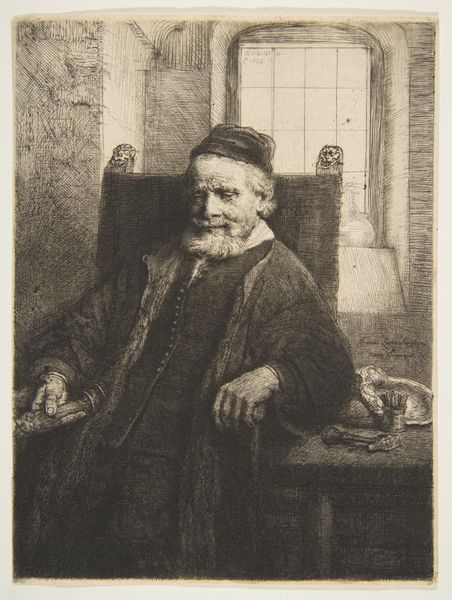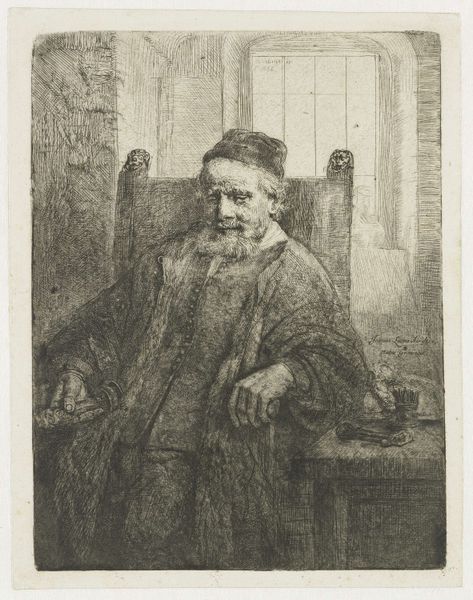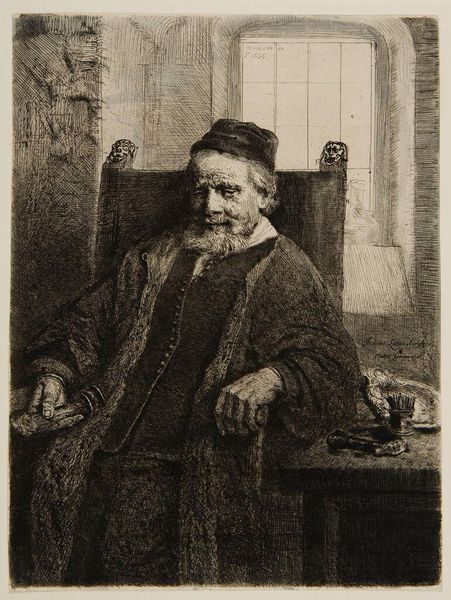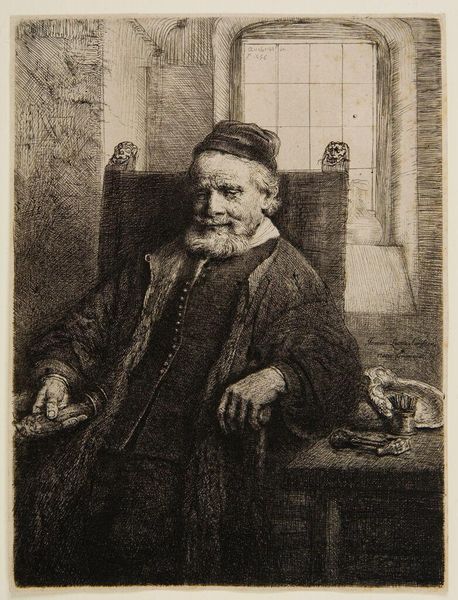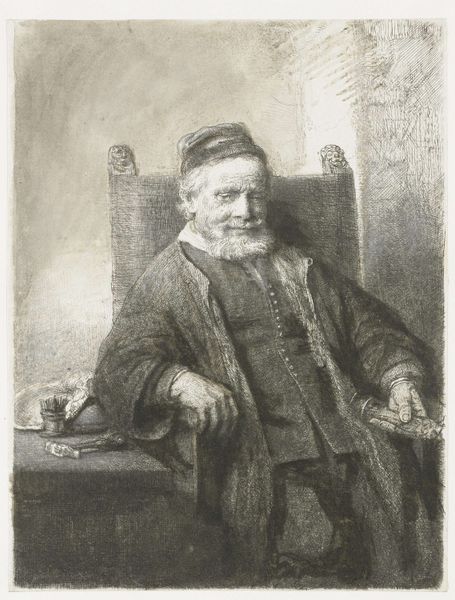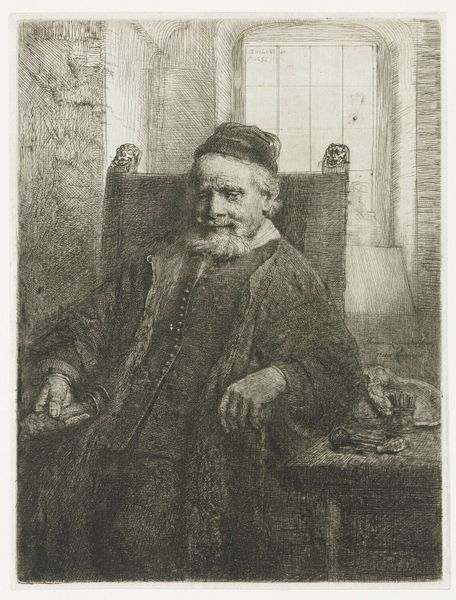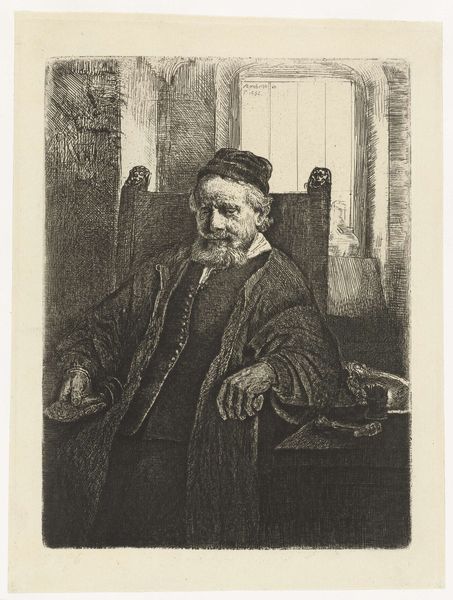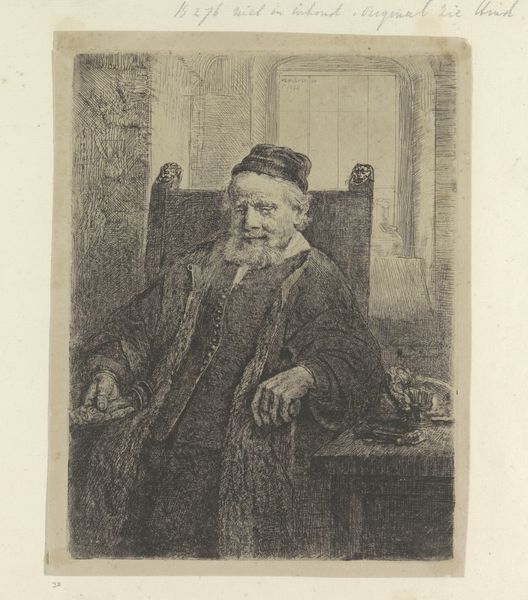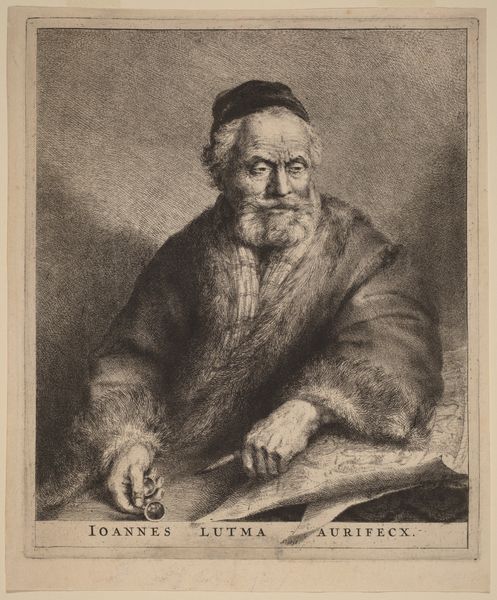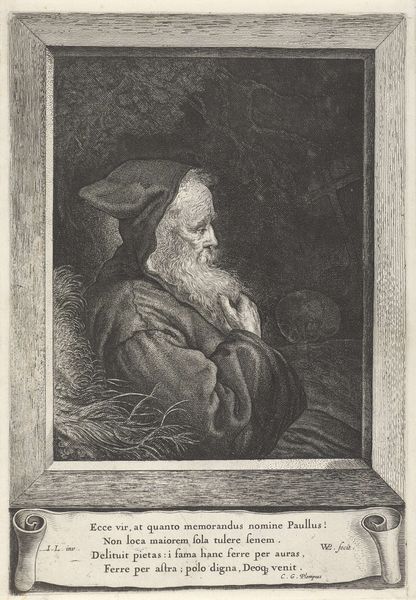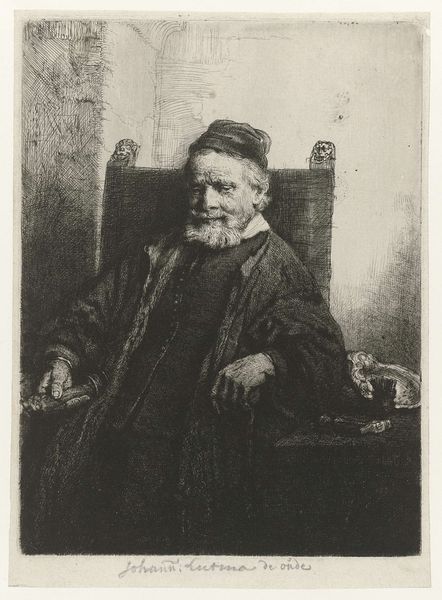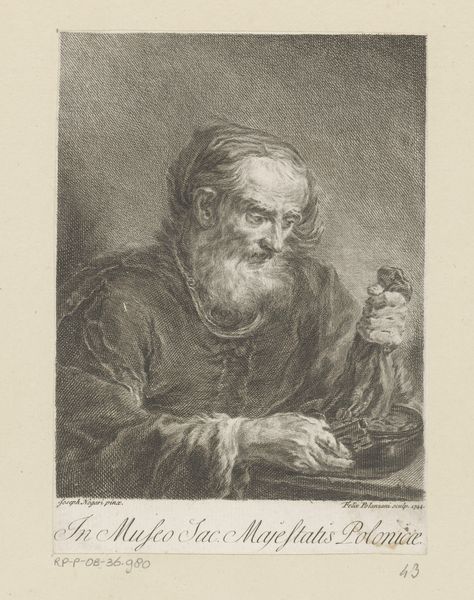
print, etching, drypoint
#
portrait
#
baroque
# print
#
etching
#
genre-painting
#
drypoint
Dimensions: 8 x 6 1/16 in. (20.32 x 15.4 cm) (sheet)
Copyright: Public Domain
Curator: Here we have Rembrandt van Rijn's etching and drypoint print, "Jan Lutma," created in 1656. There's a somber air about it, wouldn't you say? Editor: Absolutely. The deep shadows and the weight of the figure create a very palpable sense of gravitas. It's a character study, etched into copper, that explores aging and intellect. The composition leads the eye to Lutma's hands and then back up to his knowing face. Curator: The light, almost exclusively illuminating his face and hands, draws immediate attention to his intellect and craftsmanship. Observe the chair, adorned with grotesque masks—these classical motifs were sometimes linked with artistic inspiration and protection from malevolence. Editor: And those masks…grimacing and gazing forward, guarding his genius perhaps. This is baroque portraiture imbued with symbolic depth. Lutma seems the embodiment of the successful craftsman, tools present, mind clearly active, settled comfortably into a wealthy existence. Curator: Notice also the layering of textures. From the smooth paper to the varied etched lines—it really enhances the illusion of depth, especially in rendering Lutma's luxurious fur-trimmed robes. He truly masters the tonal scale within such a small print. Editor: The subject seems weighed down by a heavy history of creation; look how those etched lines furrow his brow. There's a deep-seated narrative here, a lived life expressed through his very posture and the meticulous textures of his garments. Rembrandt lets us perceive the artist's mind, at ease. Curator: It shows that through skilled composition, balanced tonality and carefully placed lines, a work's emotional narrative emerges almost purely through form. Editor: Precisely, and by concentrating on the relationship between symbol and subject we get more depth on the significance of craft. I keep seeing this print as a testament to human creative endeavor, of wisdom gained through long artistic engagement with craft. Curator: An interesting, quite persuasive interpretation! I focused so intensely on how these formal components convey and elevate a realistic subject in this etching. Editor: Perhaps that contrast itself encapsulates art and craftsmanship and its intrinsic power.
Comments
minneapolisinstituteofart about 2 years ago
⋮
Jan Lutma, Goldsmith, pays homage to one of the grand old men of Dutch art at the time. Lutma, then in his seventies, was a master of the auricular forms fashionable earlier in the century. He holds a statuette, and on the table beside him are a hammer and a cup full of punches—the tools of his trade—as well as a dish featuring sensuous curvilinear contours for which he was famous. Though Rembrandt portrays Lutma as physically past his prime, he also gives him the penetrating gaze of a sharp mind still at work. The exceptionally neat inscription identifying the sitter may have been applied to the plate by Lutma’s son, who was both a goldsmith and a printmaker.
Join the conversation
Join millions of artists and users on Artera today and experience the ultimate creative platform.
